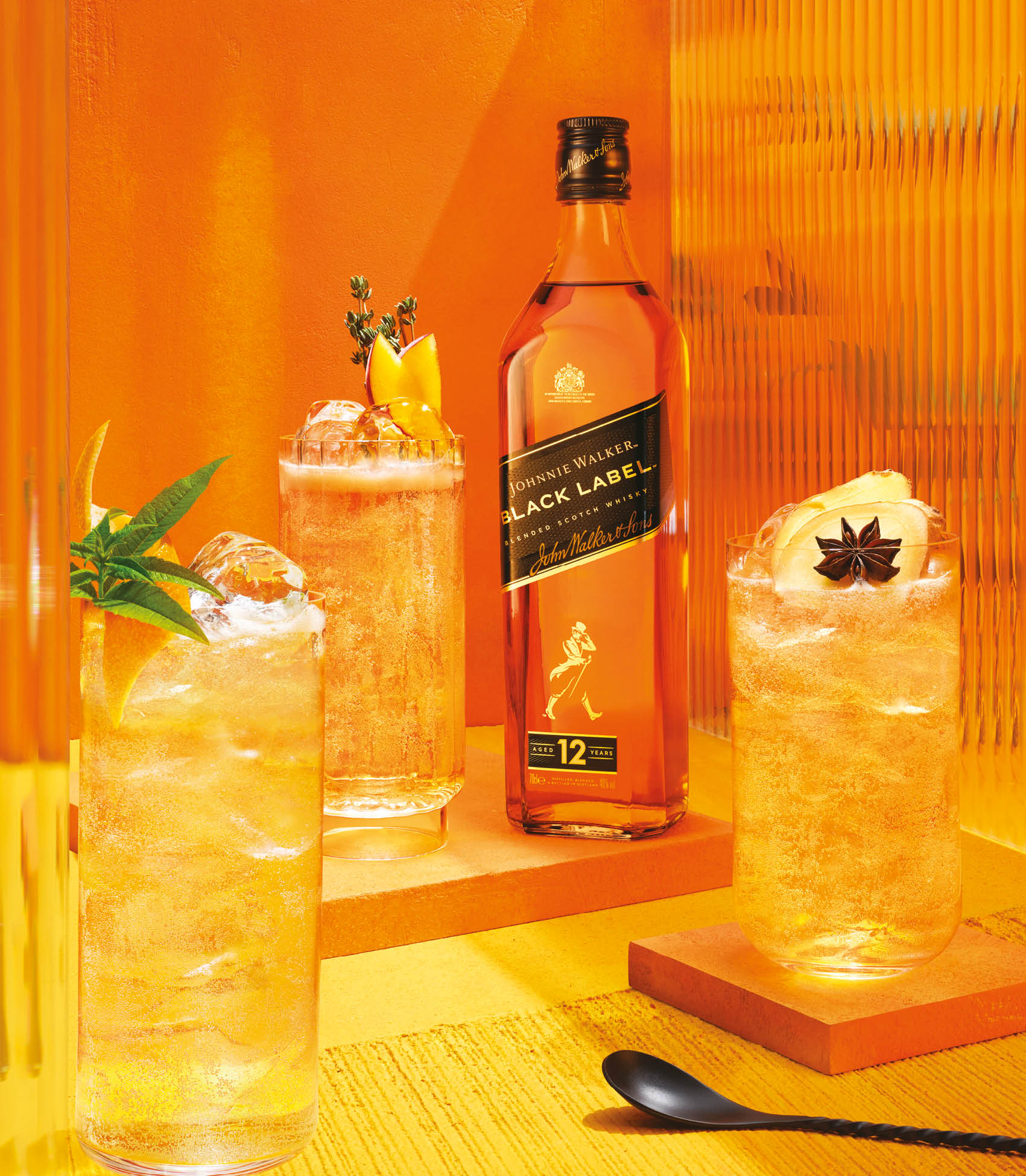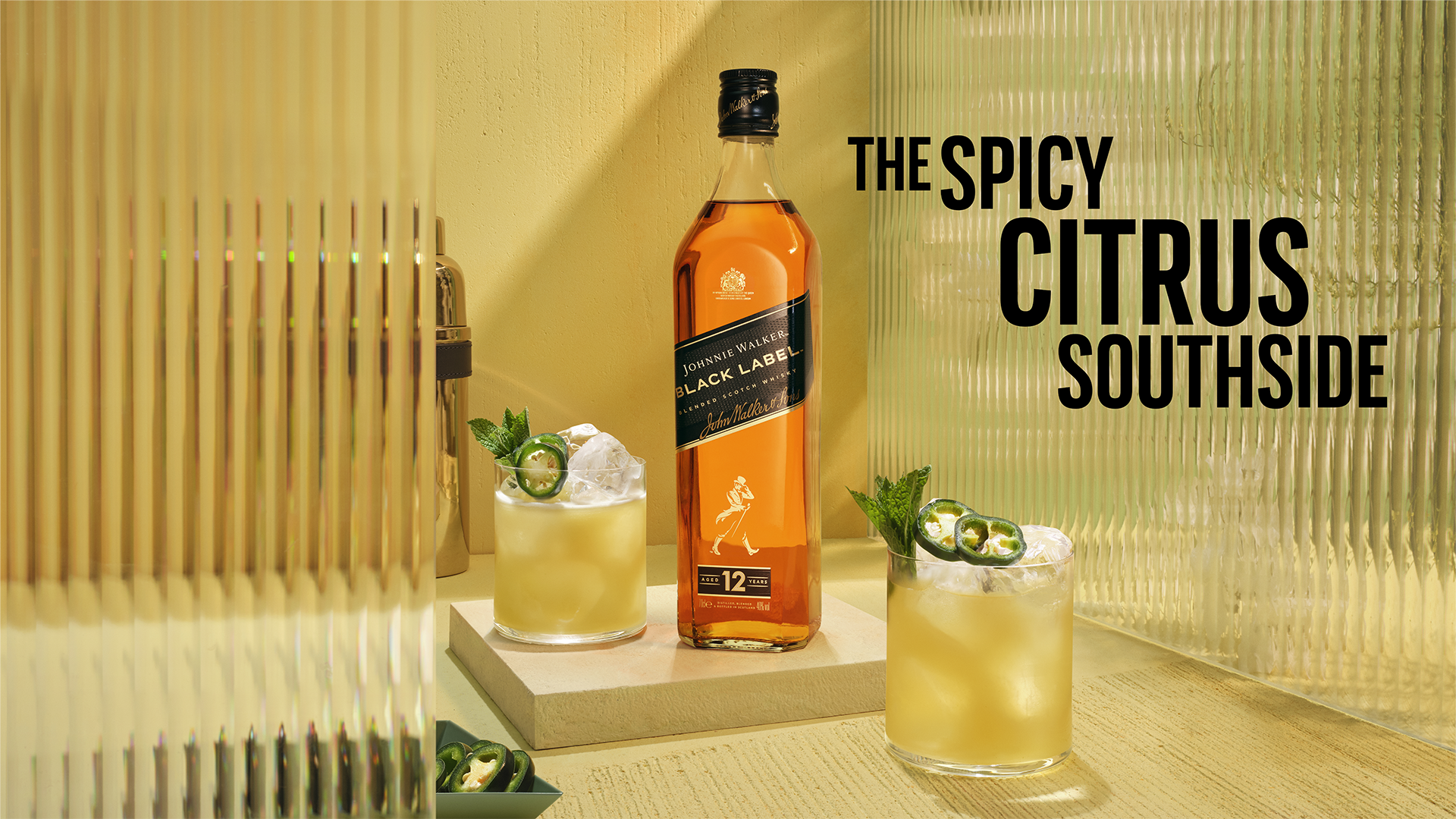As with most things in modern life, your choice of whisky can be a very divisive topic.
To blend or not to blend, that is the question — or at least a question I regularly ask myself. My approach has always been taste-led; an appreciation of flavour and variety in curation, and the techniques that bring with them as much cause for acclaim as the drinks themselves.
A stalwart in the blended whisky conversation is Johnnie Walker, with 150+ year legacy, creating their first signature blend in 1865. Since then, they have become a whisky brand that need no introduction – regardless of continent – with a brand that spans culture and age, demographics and societal “norms”. Ironically, this popularity has potentially been a barrier between knowing the Johnnie Walker brand and getting to know the whisky itself. Once seen, you can’t help but be drawn visually to that distinctive sash-labelled bottle, regardless of the company it keeps on shelf.

The anonymity afforded by blending is both a strength and a weakness, with the inability to focus on specificity of whisky type leading to more focus on the resulting flavour. As it well should be, after all whisky in its very essence is a drink to be enjoyed. But with this anonymity comes a difficulty to describe exactly what that whisky is or a specific flavour profile. I often hear phrases like “It’s smooth” or “I love the flavour” but nothing definitive or easily identifiable as you often get with single malts. In summary, a lot of people love Johnnie Walker but can’t really explain why.
A somewhat strange introduction, but this was the dialogue I had with myself when I received the invitation to join new Johnnie Walker Master Blender, Emma Walker, as she dived deep into the flavour construction of Johnnie Walker Black Label. First created over 100 years ago Johnnie Walker Black was a solution to the inconsistent, mono-tone single malt whiskies during those times, the blend a providing a reliability and consistent intricacy to the flavour profile that was unheard of.
“Johnnie Walker Black Label sells more than 20 million cases of Scotch in more than 180 countries every year, it’s a whisky that’s loved by consumers all over the world.”
— Julie Bramham, Global Brand Director, Johnnie Walker

The core of the Black Label construction is multifaceted but the “four corners” of the blend if you will represent both the diversity in flavour and topographical origins of the Scottish whiskies that come together to create the signature flavour.
The four whiskies in question Glenkinchie, Clynelish, Cardhu and Caol Ila; whiskies that have unique characters and tell a different story of their origin. Glenkinchie with its creamy toffee and vanilla notes, the sweet fruit of Clynelish, the darker fruits preeminent in Cardhu, and the soft smokiness of Caol Ila.

As Emma Walker talked us through the tasting of each whisky, you can’t help but visualise the journey from the Lowlands to the Highlands. Whether it’s looking out over the North Sea, or walking past the richly scented yellow Gorse trees that punctuate Edinburgh and the Scottish countryside; and these are just four of over twenty-nine different whiskies blended to make Black Label.
Some see black as an absence of many colours, but in fact it is a blend of many and to such an extent that they appear as one. I think the same could be said about the blended whisky contained within a Black Label bottle, a whisky that humbly left its at one time decadent naming[1. Alexander Walker (son of founder John Walker) created his first signature whisky blend in 1865, calling it Old Highland Whisky (which came with a white label, later discontinued). He soon added Special Old Highland Whisky (with a red label) and Extra Special Old Highland Whisky (with a black label). Since the names didn’t necessarily roll off the tongue, and they were hard to read from the other side of the counter, customers started asking for “the one with the black label” and “the one with the red label.” In response, in 1909 Alexander Walker (John Walker’s grandson) simply changed the names to what the customers had been asking for.] to become a customer favourite, still fondly referred to as “the one with the black label”.








